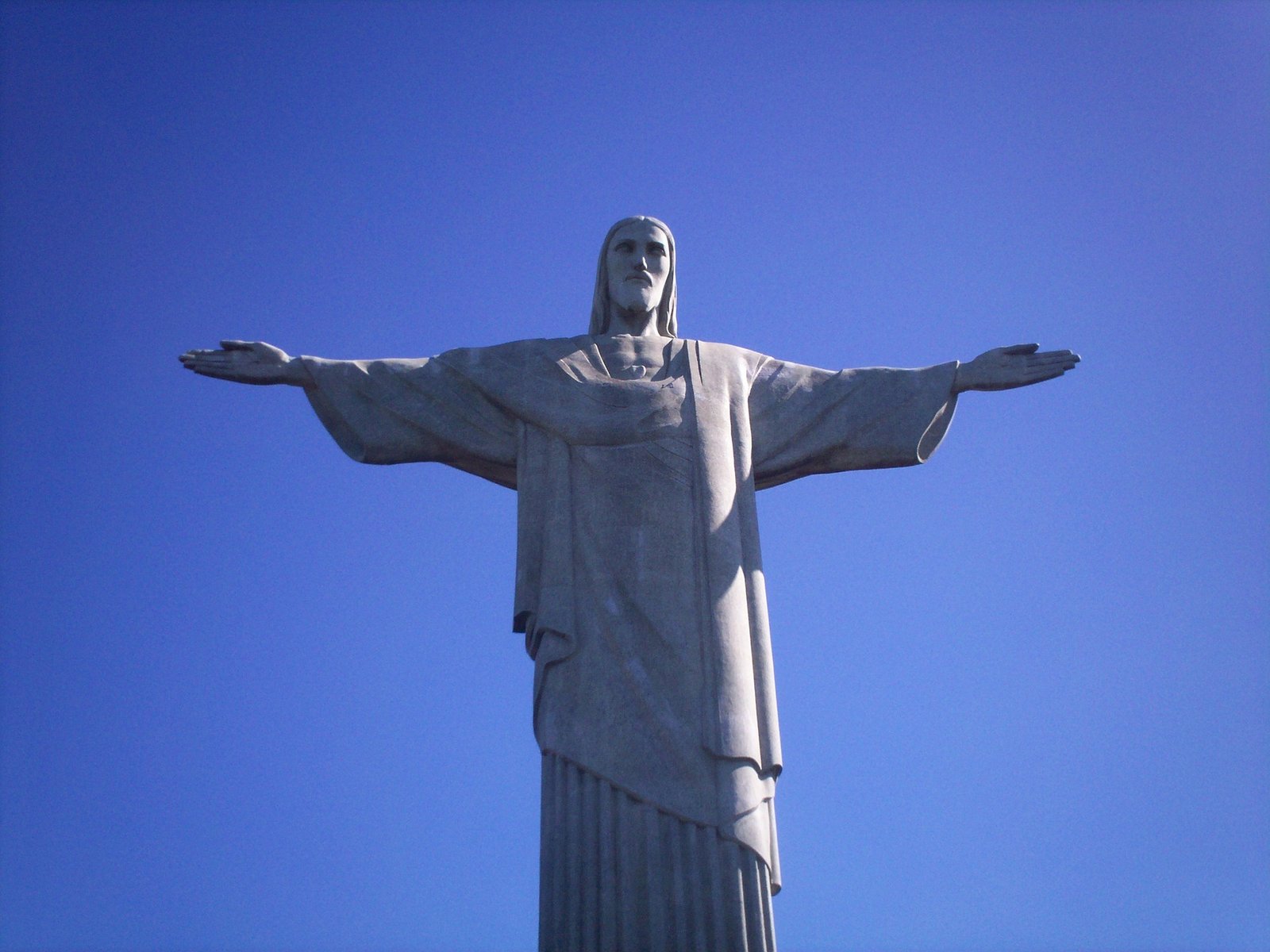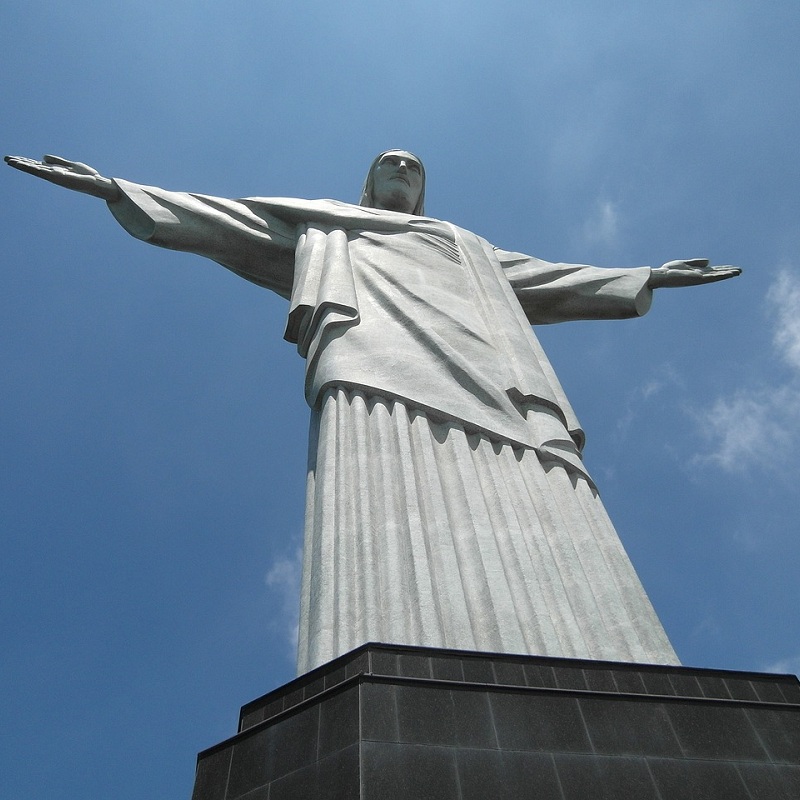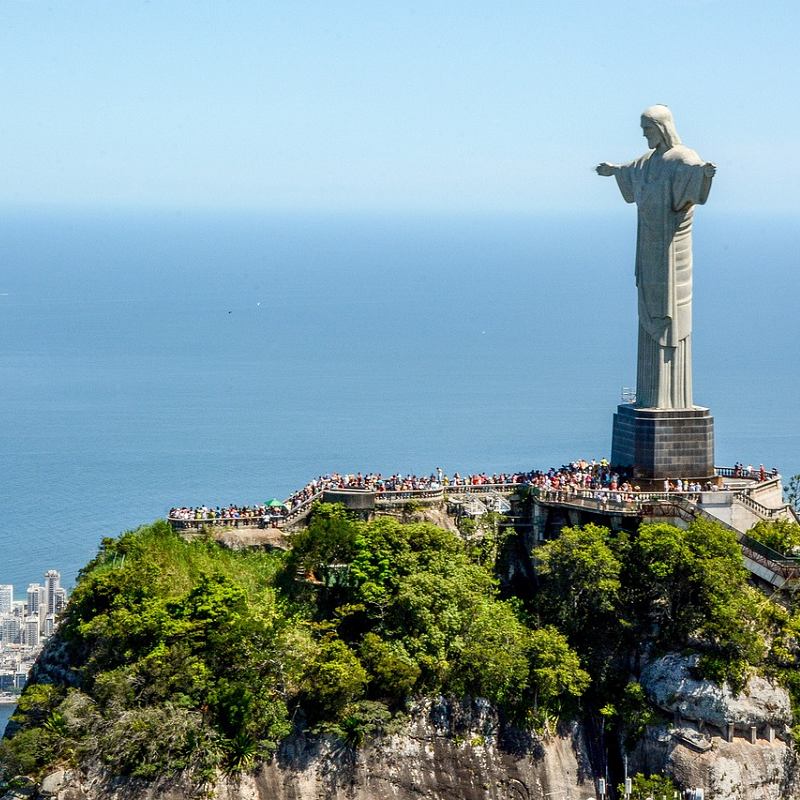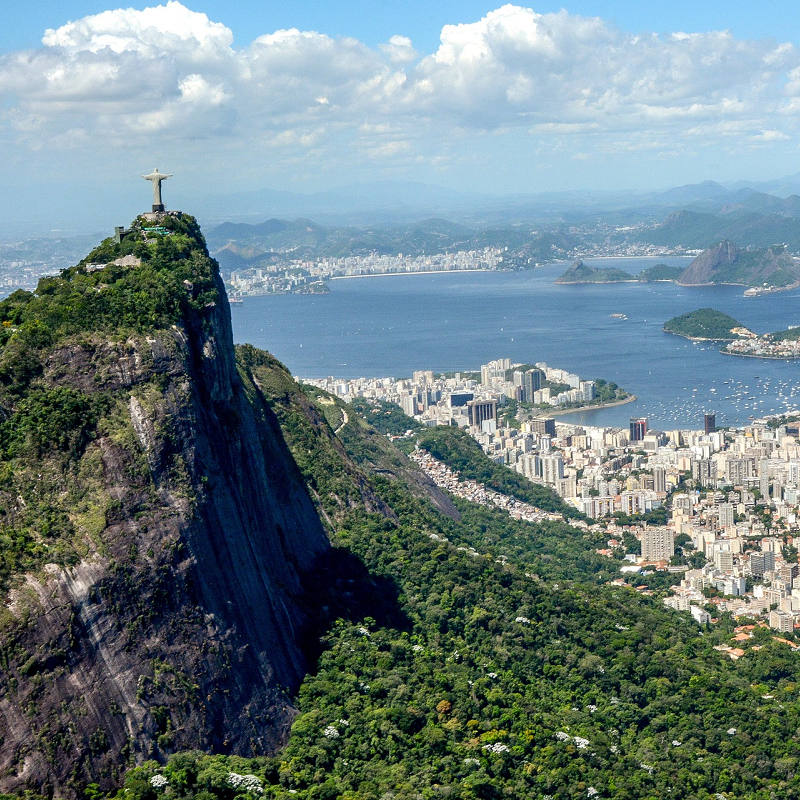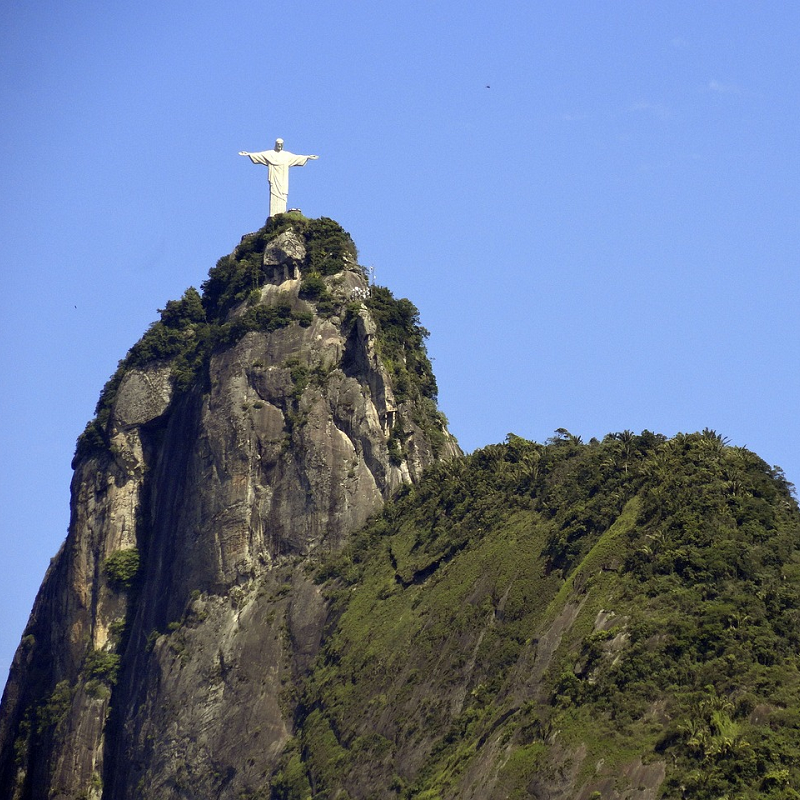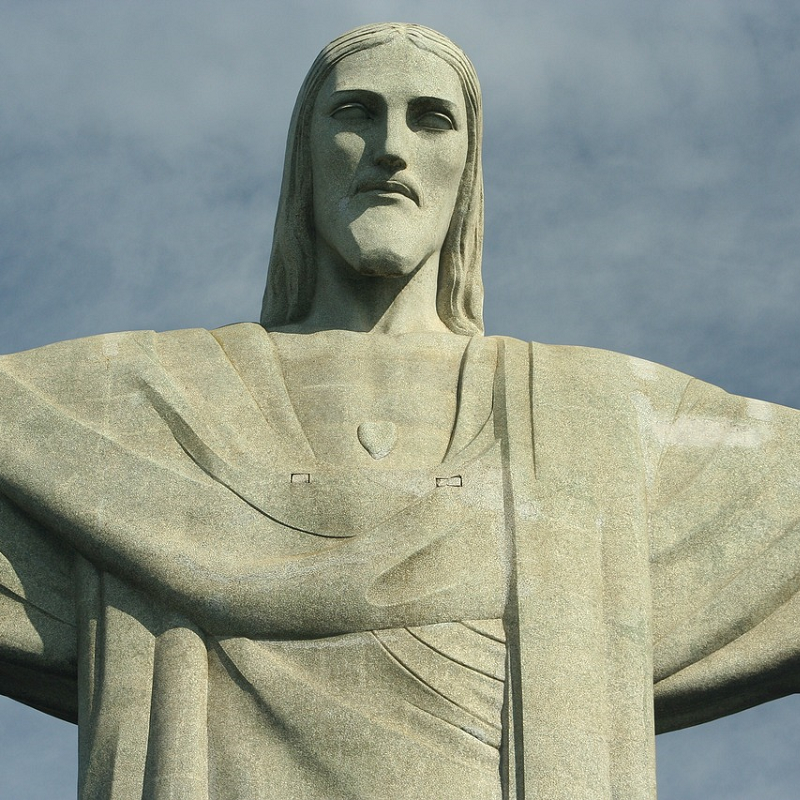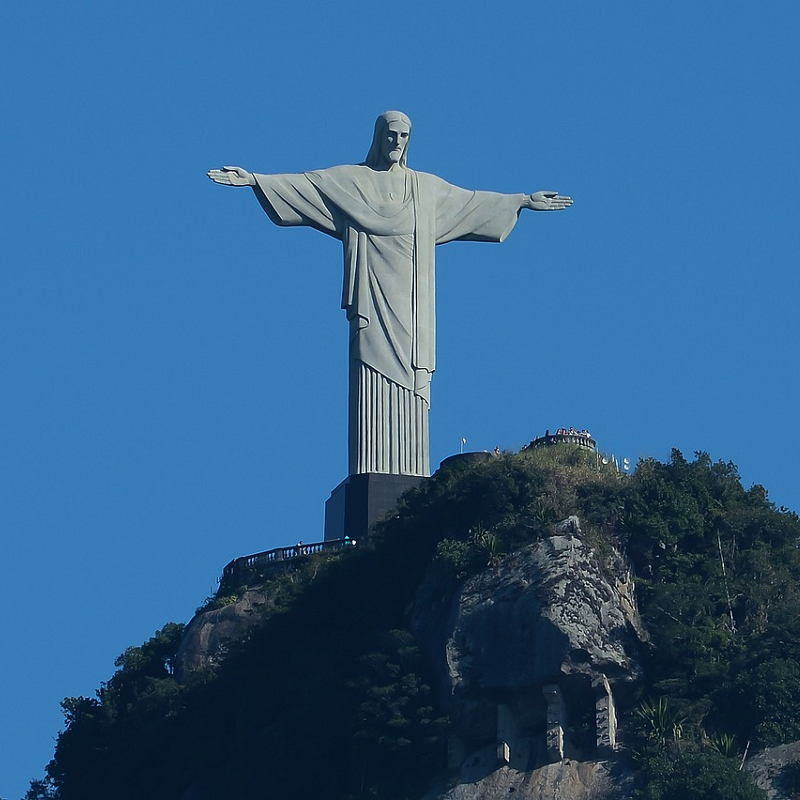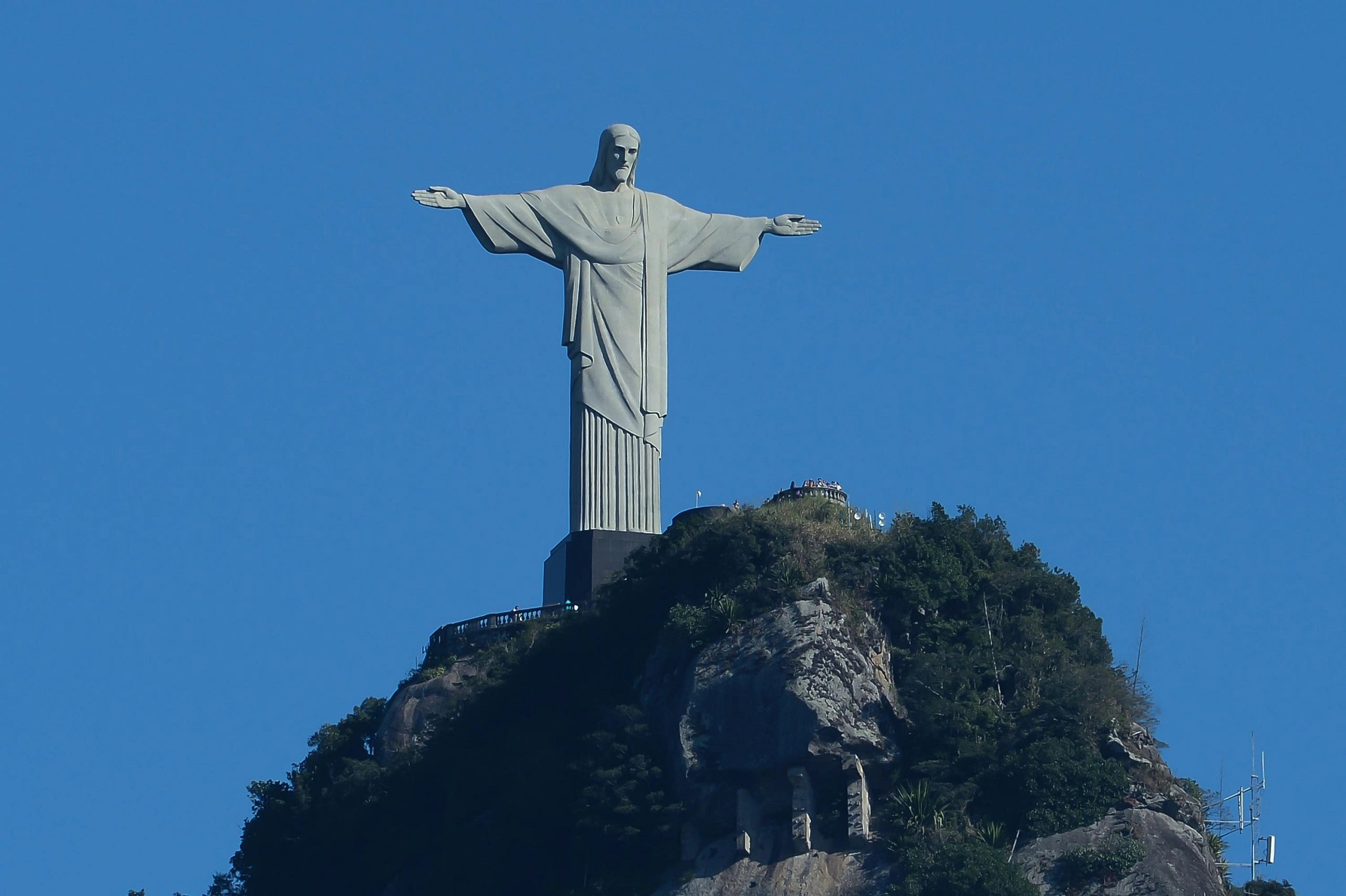
Official tickets for the Jesus statue in Rio
Limited spots – Few left!
Jesus statue in Rio – Christ the Redeemer (Cristo Redentor) is one of the most recognizable and iconic landmarks in the world. Towering over the city of Rio de Janeiro, Brazil, this massive statue of Jesus Christ has become a symbol of peace, hope, and the welcoming spirit of the Brazilian people. At a height of 30 meters (98 feet), with its pedestal adding another 8 meters (26 feet), the statue is not only a breathtaking work of art but also a testament to human ingenuity and faith. It attracts millions of visitors each year, making it one of the most visited attractions in the world. We dive into the history, cultural significance, and logistical considerations for visiting Christ the Redeemer.
General information
Christ the Redeemer is located atop Corcovado Mountain in the Tijuca National Park, which is one of the largest urban rainforests in the world. The statue overlooks the city of Rio de Janeiro and provides panoramic views of its stunning beaches, mountains, and urban landscape. The statue is made of reinforced concrete and covered with thousands of triangular soapstone tiles that reflect the sunlight, giving it a luminous appearance during the day.
The site where Christ the Redeemer stands has become a UNESCO World Heritage Site and is considered one of the New Seven Wonders of the World. The statue’s arms stretch 28 meters (92 feet) wide, symbolizing the embrace of Christ to all who visit, regardless of their background or beliefs.
Origins of the famous Brazilian statue
The idea for Christ the Redeemer was first conceived in the mid-1850s by Vincentian priest Pedro Maria Boss. He proposed the statue to symbolize the Catholic faith in Brazil and as a way to foster unity among the diverse population of Rio. However, it wasn’t until the 1920s that the project gained real momentum.
In 1921, the Brazilian Catholic Church officially commissioned the statue, and the project began to take shape. French sculptor Paul Landowski was selected to create the statue, while engineer Heitor da Silva Costa was responsible for the overall design and construction. After several years of planning and fundraising, construction began in 1926.
Construction and design
The statue was built in France and then disassembled and shipped to Brazil in 1931. The construction process was arduous and took almost five years to complete. The statue was made of reinforced concrete and faced with soapstone, which was chosen for its durability and ability to withstand the elements. The craftsmanship involved in creating Christ the Redeemer is remarkable; the statue is composed of 635 pieces, and its final assembly on Corcovado Mountain required careful planning and execution.
The official inauguration of the statue took place on October 12, 1931. The ceremony was attended by thousands of people, including dignitaries and religious leaders. Over the years, Christ the Redeemer has undergone several renovations to maintain its structural integrity and aesthetic beauty, including a significant restoration in 2010, which updated the lighting and repaired damage caused by weathering.
Populair tickets for Christ the Redeemer
Cultural significance of the giant Jesus statue in Rio
Christ the Redeemer holds immense cultural and religious significance for the people of Brazil and visitors from around the world. It is a symbol of Christianity, embodying the principles of love, acceptance, and forgiveness. The statue has also become a symbol of Rio de Janeiro, representing the city’s vibrant culture, natural beauty, and diverse population.
Beyond its religious significance, the statue has played a prominent role in various cultural and sporting events, including the 2014 FIFA World Cup and the 2016 Summer Olympics, where it served as a backdrop for numerous ceremonies and celebrations. Its presence has made it a focal point for both local and international tourism.
The scenic train journey to Christ the Redeemer
The most enchanting way to reach Christ the Redeemer is by taking the Corcovado Railway (Trem do Corcovado). This train ride offers not only convenience but also an unparalleled experience, making it a favored option among visitors.
There is a maximum number of people who can take the train (Trem do Corcovado) up to Christ the Redeemer in Rio de Janeiro every day. This maximum has been put in place to manage tourism, ensure safety and protect the environment in the Tijuca National Park. Booking well in advance is essential.
Buy official train tickets to Christ the Redeemer
Why the cog train journey is beautiful
The Corcovado Railway departs from the Cosme Velho station and embarks on a winding route through the lush greenery of the Tijuca National Park, which is one of the largest urban rainforests in the world. As the cog train ascends, passengers are treated to stunning panoramic views of the vibrant cityscape of Rio de Janeiro, its beautiful beaches, and the expansive Atlantic Ocean beyond.
Natural beauty. The train journey allows travelers to immerse themselves in the natural beauty of the area, as the train passes through dense forests filled with tropical flora and fauna. The vibrant colors of the landscape, combined with the sounds of nature, create an unforgettable atmosphere.
Breathtaking vistas: Along the route, there are several viewpoints where travelers can catch glimpses of iconic landmarks, such as the Sugarloaf Mountain and the sprawling neighborhoods of Rio. These views offer perfect opportunities for photography and create lasting memories before even reaching the statue.
Historical significance. The Corcovado Railway itself is a historic landmark, having been in operation since 1884. Riding this train is like stepping back in time, experiencing a piece of Rio’s history while en route to one of its most celebrated attractions.
Impression of Christ the Redeemer
Why hiking is to Christ the Redeemer is not a good idea
While hiking to Christ the Redeemer may seem like an adventurous option, it is generally not recommended for several reasons:
Steep and challenging terrain. The trails leading up to the statue are steep and can be physically demanding. This can be especially daunting for those who are not used to strenuous hiking. The path is narrow in some sections, which can make for a tricky ascent, particularly during inclement weather.
Safety concerns. The hike can pose safety risks, including potential injuries from slips and falls on the rugged terrain. Additionally, some areas of the trail may not be well-marked, which can lead to confusion or getting lost, especially for those unfamiliar with the area.
Time-consuming. The hike to the top can take 2 to 3 hours, significantly longer than the 20-minute train ride. This can be a disadvantage for visitors with limited time, especially those who wish to explore other attractions in Rio.
Lack of facilities. Along the hiking trail, there are few facilities such as restrooms or water stations. This can make the hike less comfortable and more challenging, particularly in the heat of the day.
Environmental concerns. The trail is located within a protected area, and increased foot traffic can contribute to environmental degradation. Opting for the train helps preserve the natural habitat while providing a more sustainable and enjoyable way to experience the beauty of the Tijuca National Park.
Visiting tips Christ the Redeemer
To make the most of your visit to the famous Jesus statue in Rio, consider the following tips:
Plan ahead. Check the weather forecast before your visit. Clear skies offer the best views and photo opportunities.
Dress comfortably. Wear comfortable clothing and sturdy shoes, especially if you plan to hike or walk around the park.
Bring a Camera. The panoramic views from the statue are breathtaking, and you’ll want to capture the moment.
Respect the site. Christ the Redeemer is a place of worship and respect. Be mindful of the surroundings and the other visitors.
